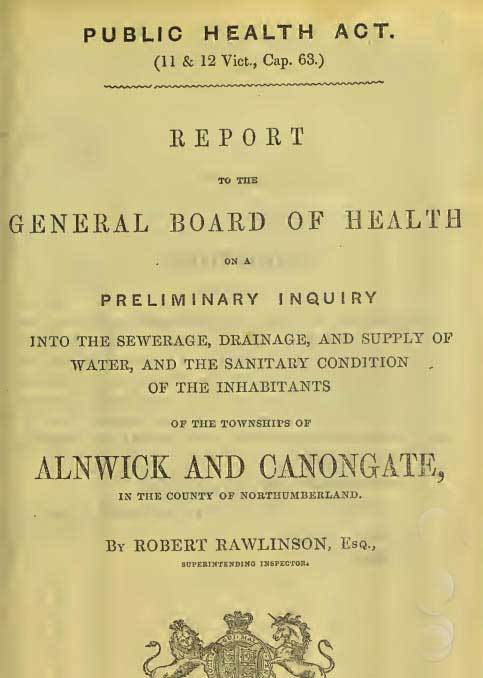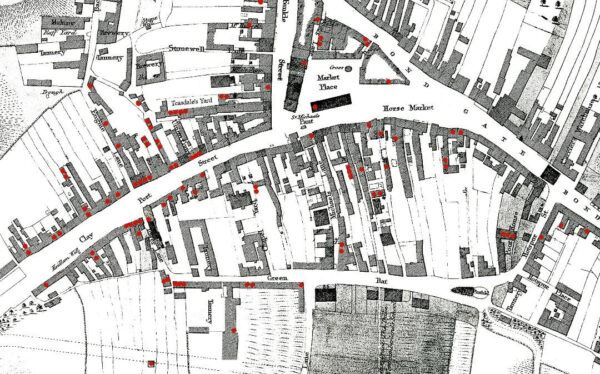Robert Rawlinson was born in Bristol. His father was a mason and Robert began by working in a stonemason’s yard. In 1831, he obtained employment in the engineers office at the Liverpool docks, and from 1836 was engaged under Robert Stephenson as assistant resident engineer for the Blisworth section of what is now the London & North-Western main line from London to the North. In 1844 he accepted an engineering post on the Bridgewater Canal and hree years later he returned to Liverpool, to superintend the design and construction of the famous brick-arched ceiling in the St George’s Hall, . During this period Rawlinson’s reputation as a sanitarian had been growing. When the Public Health Act was passed in 1848 he was appointed one of the first inspectors under it. His very first report on the great cholera outbreaks which hit England in the mid-century was on that in Alnwick, and it set the tone for his disgust at the appalling conditions he found in many parts of the country.
The cholera outbreak of 1849 left Alnwick devastated at the loss of 136 citizens. More died than at the recent Hillsborough and Grenfell Tower national tragedies, and in a small town.


From his personal visits to the houses in Alnwick struck by cholera, Robert came down on a view that unclean water supplies, overcrowding and terrible sanitation lay at the heart of the problem. His map showing the concentration of deaths in the poorest part of Alnwick preceded the similar map of the Broad St area of London drawn up by Dr John Snow by four years. Most important of all, the Rawlinson report led to Alnwick gaining a new, clean water supply and in time proper sanitation, a move mirrored in other parts of the country.

Rawlinson’s Cholera map of Alnwick
His work in Alnwick was an important first step by Rawlinson in an illustrious latter career, saving countless lives through the application of common sense and good hygiene standards to civil and military situations both in the UK and overseas. In connection with the distress caused in Lancashire by the collapse of the cotton manufacturing industry resulting from the American Civil War, Rawlinson was also sent to make an official investigation. After visiting nearly 100 towns, he proposed that £1/2 million might be advantageously expended in providing water-supply and drainage, forming streets, etc, hence relieving enormous suffering and also creating real improvements to the lives of thousands of people. In 1866 he acted as chairman of the Royal Commission on the Pollution of Rivers, and a few years later was appointed chief engineering inspector to the Local Government Board; on retiring from this position in 1888 be was awarded by the monarch the honour of KCB.

